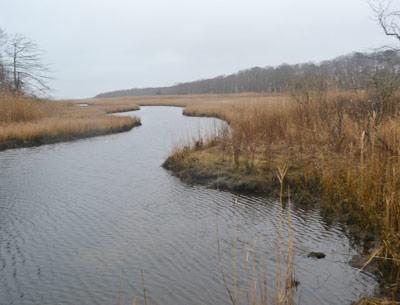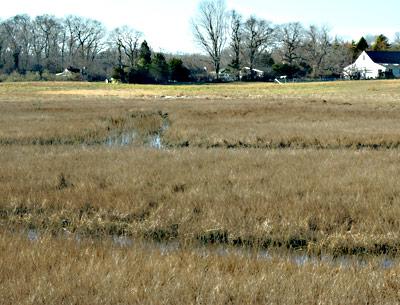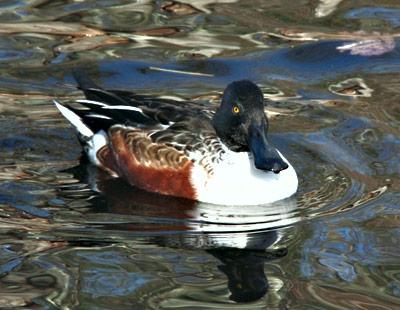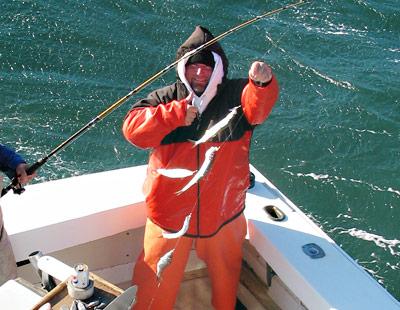Nature Notes: Spring Fever in February
Nature Notes: Spring Fever in February
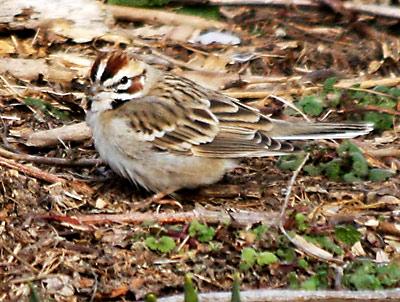
With the exception of a few below-freezing days and a dash of snow now and then, it’s been an especially mild winter and, if things don’t change, one that will surely go into the record books. Blame fossil fuel and wood burning, wild animals, livestock, pets and humans flatulating, volcanoes spewing, natural gas fracking, and the further decomposition of organic deposits such as peat. All of these collective processes, both man-made and naturally occurring, are responsible for melting the glaciers, warming the seven seas, and heating up the atmosphere close to the earth’s surface.
You may have noticed the daffodils and daylilies already pushing up new shoots. In swampy areas locally, skunk cabbage is already leafing and getting set to bloom. It is always among the first flowers to appear in the spring, but in February? Ridiculous.
On a mild January night two-and-a-half weeks ago, Andy Sabin got the itch to go out and look for tiger salamanders, one of the New York State endangered species, the largest state populations of which occur on Long Island. He went to one of his favorite salamander ponds on the South Fork and, yes, he found four adult tiger salamanders. They had left their earthen chambers and were ready to reproduce. No telling how long they had already been in the water.
Two Mondays ago on a warmish afternoon at Morton Wildlife Refuge in Noyac, the usual year-round resident birds were out in force begging for food, but there was also a catbird, not only basking in the sun, but meowing to passers-by simultaneously. A few overwinter here each year, but the majority go south to stay warm.
Normally, at this time of year the ground to three or four inches below grade is frozen solid. Not this year. Perhaps, that is why the daffodils and daylilies are having an easy time of it and the tiger salamanders have no problem “digging” out. The early birds get the worm, the early salamanders get the breeding pond all to themselves, but what about the premature bloomers, do they get the insect pollinators? I think not.
While looking for oysters in the shallows of Three Mile Harbor, Chris Russo saw what could have been a crab on the bottom but what turned out to be a diamondback terrapin. It is not uncommon for diamondbacks to be in marine waters close to shore at this time of the year, but buried in the sand or mud where the upwelling groundwater keeps them warm during the cold months in their semi-hibernatory states. That particular diamondback was taking a heck of a chance. A cold snap could render it helpless, without the wherewithal to dig back under. Aside from motor vehicle hits, the next-biggest killer of local box turtles is winter warm spells followed by severely frigid periods. The turtles come out of the ground in a torpid state ready to start spring, and they literally freeze to death when the cold nips them in the bud. I advised Chris to keep the terrapin until spring comes.
On the other hand, one would think that there would be more roadkills to be seen, what with the opossums, raccoons, squirrels, and other mammals staying active these past warm nights. Not the case, however. The number of roadkills, at least according to my January and February observations, is way down. Part of the downturn can be attributed to few motorists on the roads during this time of the year.
Maria Bowling has been entertaining bluebirds all winter in her East End yard. It may be because she provides water for them, as they are not birds that normally come to feeders, but they need to drink. Or it may be that she is a certified Chinese herbalist. Bluebirds could go for that.
By the same token, two male robins were feeding on the grassy shoulder of Old Northwest Road in East Hampton when I drove by during the afternoon more than a week ago. Great blue herons are in abundance this winter. I saw three different ones on Feb. 3 flying low over North Sea Harbor, apparently in search of good fishing spots. In normal winters, the shallow estuarine waters and all of the fresh waters would be frozen over and the great blues would have to go farther south to find food, or perish from starvation.
One of the most unusual birds among the many that have loitered through the winter here is a lark sparrow. It showed up at Walter and Ellie Galcik’s feeders at the edge of Ditch Plain in Montauk a few weeks ago and has hung around since. Walter and Ellie are very generous and longtime feeders when it comes to birds, so who knows, it might not be the first winter that a lark sparrow, normally a bird of the Midwestern prairies, has visited that spot. Several birders, including Karen Rubenstein, have visited the Galciks to get a good look at it. (Walter is the caretaker of Shadmoor Park, right next to the Galcik residence, and has worked continuously for the East Hampton Town Natural Resources Department since 1992.)
The most unusual appearance of all, in my mind, was the adult chipmunk that greeted me along Morton Wildlife Refuge’s main trail to the bay on that same Monday afternoon that I saw the catbird. Chipmunks, like woodchucks, are hibernators. They almost never come out of their subterranean burrows during the winter. This one was every bit as chipper as those you see during the middle of summer, sitting up asking for handouts. I guess it knew what it was doing and was fully capable of going back under should the need arise.


